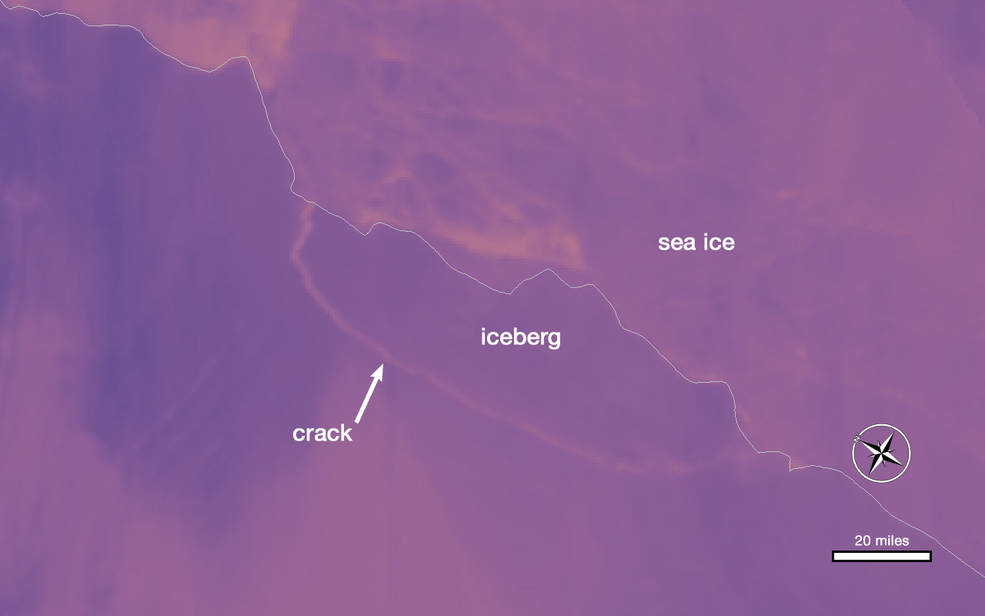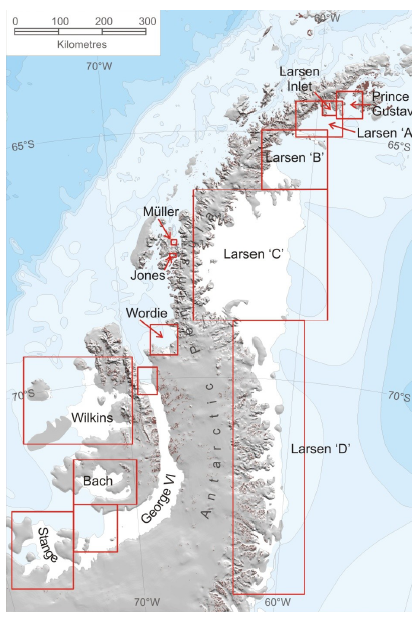
Sometime between July 10 and 12, a massive iceberg the size of the US state of Delaware broke free from Antarctica’s Larsen C Ice Shelf. The crack that led to the separation was visible in the first images of the ice shelf captured by NASA satellites in 1963. However, the rift remained dormant for decades, before suddenly spreading northwards and widening by 18 miles between 2011 and 2015 and then an additional 13 miles in 2016. As of last month, the iceberg, named A-68 by the US National Ice Center, was hanging by a thread and experts knew it was just a matter of time before it broke free.
Iceberg calving – the breaking of ice chunks from the edge – is a natural part of a glacier’s life cycle. However, the detachment of A-68 is receiving a lot of attention due to its massive size. Measuring 5,800 square kilometers (2,240 square miles), the 620-feet thick chunk of ice has reduced the Larsen C Ice Shelf area by more than 12% and permanently altered the topography of the Antarctica Peninsula.

“The interesting thing is what happens next, how the remaining ice shelf responds,” said Kelly Brunt, a glaciologist with NASA’s Goddard Space Flight Center in Greenbelt, Maryland, and the University of Maryland in College Park. “Will the ice shelf weaken? Or possibly collapse, like its neighbors Larsen A and B? Will the glaciers behind the ice shelf accelerate and have a direct contribution to sea level rise? Or is this just a normal calving event?”
Adrian Luckman, a member of Project Midas, a UK-based Antarctic research project investigating the effects of a warming climate on the Larsen C Ice Shelf since 2015, cautions it is premature to assume that the calving is a result of global warming. The glaciologist also asserts that since the iceberg is afloat and already displacing its weight in the ocean, there is no imminent danger of the sea levels rising.
As expected, the colossal ice sheet is already splintering. Satellite images taken on July 19 show hundreds of small icebergs, as well as three sizable ones, floating around the superstructure's perimeter.

Ice shelves, which border 75 percent of the Antarctic Peninsula, form from snow that has been compacted into ice over the course of thousands of years. They are found where glaciers meet the ocean and the weather is frigid enough to keep the ice frozen. The icy structures are important because they help control rising sea levels by forming a natural barrier against the water melting from glaciers.
The Larsen Ice Shelf, which is located in the northwest part of the Weddell Sea, once comprised four segments: Larsen A (smallest) Larsen B, Larsen C (largest) and Larsen D. The first two disintegrated in January of 1995 and February of 2002 respectively.
While scientists will continue to monitor A-68 and its parent, many believe it will take several years before Larsen C collapses further. “The remaining 90 percent of the ice shelf continues to be held in place by two pinning points: the Bawden Ice Rise to the north of the rift and the Gipps Ice Rise to the south,” said Chris Shuman, a glaciologist at Goddard and the University of Maryland at Baltimore County. “So I just don’t see any near-term signs that this calving event is going to lead to the collapse of the Larsen C ice shelf. But we will be watching closely for signs of further changes across the area.”
Resources: Guardian.co.uk, weather.com, pbs.org,businessinsider.com